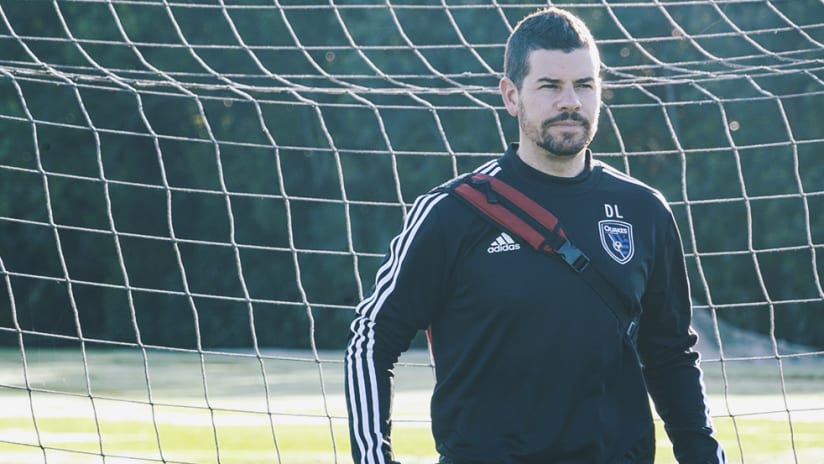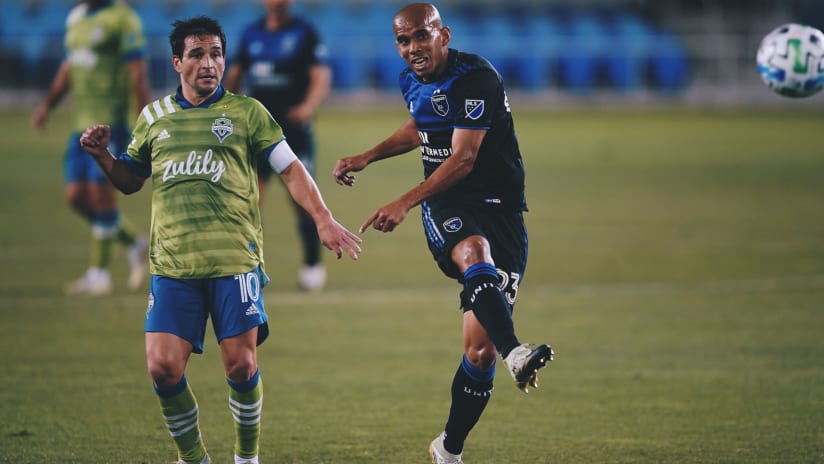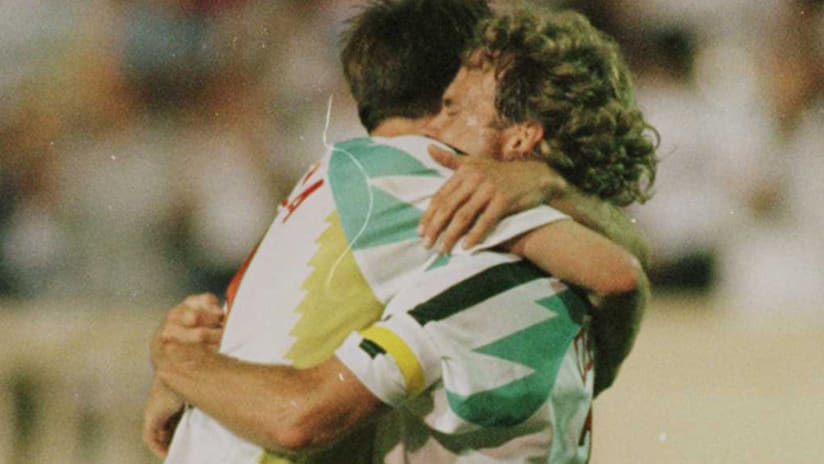As the San Jose Earthquakes prepare for their second preseason trip to Cancún, Mexico, a lot of work is being done behind the scenes to get the team ready. We sat down with several members of the Quakes’ soccer operations staff to get a feel for what the grueling two-week training stint requires.
Sjearthquakes.com: How long have you worked for the Earthquakes?
Head athletic trainer Derek Lawrance: “I’ve been here since 2013, so this is going to be my eighth season.”
SJEQ: How does preparing for Cancún differ from previous preseason trips to Tucson, Arizona?
DL: “The biggest difference is going international and learning the international laws of shipping; what you can and can’t bring and how you document everything. We ran into a problem last year bringing our GPS unit because they were asking to see our original purchase receipt so they can charge taxes and fees. We didn’t have that with us so this year we’ll be much more prepared in that area. We’re getting all of our purchase contracts together now. Because we train here in San Jose for a few days before we depart, and we won’t have a charter flight to just throw everything we need on it, that’s very difficult.”
SJEQ: Now that this is your second trip to Mexico, how do you think things will be easier for you?
DL: “Last year, we had maybe a month to prepare for Cancún. This year, we’ve known about it for quite a while, so I’ve already been in contact with the liaisons there. We’ve proposed upgrades in a sense of what we want to be better for this year and they’ve apparently agreed to all of those. That should make things easier for us logistically. Last year, we ran into some problems moving the gear around the resort, from our rooms to the field. We stay across two resorts, technically; we do gym workouts in one and then have to be at the training field a mile and a half away 20 minutes later. We now have a much better understanding of the lay of the land.”
SJEQ: What sort of supplies are necessary and how many bags will you be packing?
DL: “I think last year we took something like six roller bags, two massage tables and two trunks, and that was just for the medical staff. We have to take our entire operation down there because we’re down there for so long. Luckily, we have accumulated some modalities that are quite small so that makes packing a lot easier.”
SJEQ: What do you have to make sure you don’t forget?
DL: “A lot of preseason is just recovery and treatment because guys will be dealing with a lot of aches and pains throughout the entire time so you have to make sure you can cover all those areas. We have portable recovery modality devices, as well as plenty of tape and medicine.”
SJEQ: What’s a normal day look like for you?
DL: “A typical day starts around 5:30 a.m. You’re at pre-breakfast until about 6:30. Treatments have to be completed by 7:15 because you have to get down to the field and have it prepared by 7:45. That involves loading a van, driving the van about three-quarters of a mile down a cart path, unloading the van. Practice will run from 7:45-9:45 and then we need to get back to the room to do more treatment from 10-10:30 before going to breakfast. We then do more treatment until lunch around 1 p.m. We get a break to ourselves from 2-3:30 before more treatment from 4-5 p.m. We then have to prepare for the second training session, which runs from 5:30 to 7 or 7:15. From there, we head to dinner and then do more treatment until about 9:30; then shut it down, go to bed and repeat for seven straight days until we get our one day off.”
<strong>Time</strong> |
<strong>Event</strong> |
<p>5:30 – 6 a.m.</p> |
<p>Wake up and get ready</p> |
<p>6 – 6:30 a.m.</p> |
<p>Pre-breakfast (snack)</p> |
<p>6:30 – 7:15 a.m.</p> |
<p>Player treatment</p> |
<p>7:15 – 7:45 a.m.</p> |
<p>Load/drive van; prepare training field</p> |
<p>7:45 – 9:45 a.m.</p> |
<p>Training session No. 1</p> |
<p>9:45 – 10 a.m.</p> |
<p>Load/drive van back to room</p> |
<p>10 – 10:30 a.m.</p> |
<p>Player treatment</p> |
<p>10:30 – 11:30 a.m.</p> |
<p>Breakfast</p> |
<p>11:30 – 1 p.m.</p> |
<p>Player treatment</p> |
<p>1 – 2 p.m.</p> |
<p>Lunch</p> |
<p>2 – 3:30 p.m.</p> |
<p>Break</p> |
<p>3:30 – 5 p.m.</p> |
<p>Player treatment</p> |
<p>5 – 5:30 p.m.</p> |
<p>Load/drive van; prepare training field</p> |
<p>5:30 – 7 p.m.</p> |
<p>Training session No. 2</p> |
<p>7 – 7:15 p.m.</p> |
<p>Load/drive van back to room</p> |
<p>7:15 – 7:30 p.m.</p> |
<p>Get ready for dinner</p> |
<p>7:30 – 8:30 p.m.</p> |
<p>Dinner</p> |
<p>8:30 – 9:30 p.m.</p> |
<p>Player treatment</p> |
SJEQ: With two-a-day training sessions and other mandatory workouts, how do you make sure the players are prepared to compete physically every day?
DL: “That’s why it’s important that we have a good medical staff. Last year, we had three full-time athletic trainers, a masseuse and our kinesiologist Fabio [Alvarez]. We had a good size staff there and were able to perform a lot of treatment with the use of modalities. Most importantly, having a strong medical team there allows us to handle many things at once since we’re bringing right around 30 players.”
SJEQ: What’s the most common complaint from the players?
DL: “Aches and pains in their legs, that’s really it. The training sessions are very tough. Matias [Almeyda] demands a lot of the guys. The players will understand that better this year, so I believe they’ll come into camp in better shape, which is great from our end. The whole trip last year, we had maybe two guys that missed a few days to injury, but they were still out on the field working to recover. There actually wasn’t a single player that missed an entire day of practice.
“The guys fought through a lot because they knew they had to impress Matias and they know that will be demanded of them once again.”




